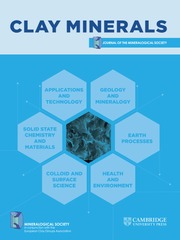No CrossRef data available.
Article contents
Iron mining waste as a sustainable material for producing bricks: microstructure, mechanical and thermal properties
Published online by Cambridge University Press: 14 October 2025
Abstract
Iron mining waste is produced from the iron ore mining operations of El Ouenza Mine (north-east Algeria), and it is not currently recycled to preserve the environment. The current study aims at developing sustainable clay bricks by mixing clay with different proportions of iron mining waste (ranging from 10 to 50 wt.%) and fired at 850°C and 950°C. Addition of 30 wt.% Iron mining waste had a positive effect on the physical and mechanical properties of the fired clay bricks. Linear shrinkage, water absorption and porosity were reduced, while compressive and flexural strengths were increased. Furthermore, up to 30 wt.% of iron mining waste addition to the mixtures improved compressive and flexural strengths to 59.17 and 10.06 MPa, respectively, when the bricks were fired at 950°C. According to their thermal conductivity, the bricks with 10–50 wt.% iron mining waste are considered as thermal insulators, with thermal conductivity values ranging from 0.45 to 0.56 W m–1 K–1. Adding 30 wt.% of iron mining waste can lead to the production of eco-friendly bricks with high mechanical and thermal properties, generating economic and environmental benefits.
Keywords
Information
- Type
- Article
- Information
- Copyright
- © The Author(s), 2025. Published by Cambridge University Press on behalf of The Mineralogical Society of the United Kingdom and Ireland.
Footnotes
Associate Editor: Michele Dondi

